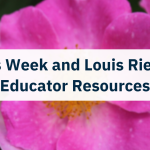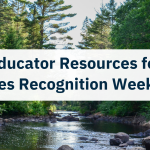Trauma-Informed Practice and Creating Safe Spaces
On September 30, learners across Canada will mark Orange Shirt Day. Educators should encourage learners to read or listen to Phyllis’ Story and wear orange shirts to raise awareness about the Indian Residential School System. As an educator, you may have researched and learned about residential schools. Maybe you plan to address this topic through a novel study. You consider contacting a Survivor, Elder, or community member to speak with your class about their experiences.
You may be ready to address this important topic, but are your learners?
Preparing to Teach Traumatic Topics
As we visit schools and talk to educators, some have explained that it is hard to talk about residential schools with their learners. They find their learners become re-traumatized while learning about what happened to their parents and grandparents. These educators know that teaching about residential schools is important. But they ask themselves, how do I talk about this extremely affecting topic without re-traumatizing my learners? How can educators teach about the horrors of residential schools while shielding learners from feeling hopelessness, anger, and shock?
Trauma-Informed Practice in the Classroom
Trauma-informed practice may be new to you. Essentially, it is a way of relating mindfully to learners who have likely experienced some form of trauma. It is an awareness that trauma impacts learners’ behaviour, thought processes, and ability to feel safe and learn. In a trauma-informed practice, you ask yourself, “What has happened or is still happening to this child?” and “How can I support this child?”
This may sound like a small shift in thinking and approach, but it can be more complicated than it seems. Trauma-informed practice can have wide-ranging impacts on your class and school.
Creating Safe Spaces
Trauma-informed practice helps learners learn about themselves, their emotions, and the academic content you need to teach them. It creates safe spaces for learners to cope with their trauma and learn and talk about difficult topics. These spaces are necessary for learners whether or not the Indian Residential School System affects them directly. In these spaces, learners can freely express emotions while learning and feel safe posing questions without judgment.
To begin fostering this culture in your classroom, you can focus on four strategies identified by Physical and Health Education Canada:
- Learn and teach about trauma and strategies to cope with trauma.
- Create a welcoming environment and form personal relationships with your learners.
- Provide your learners with choices and opportunities for collaboration, especially when identifying necessary supports.
- Use strength-based and capacity-building approaches.
The resources listed below can help you use these four strategies in your classroom.
Learn and teach about trauma and strategies to cope with trauma.
The National Child Traumatic Stress Network provides a wealth of information about childhood trauma. In addition to a Psychological First Aid for Schools Manual, they offer information about how trauma intersects with various aspects of a child’s identity, including culture, history, and language.
Create a welcoming environment and form personal relationships with your learners.
The research paper “Ask me about trauma and I will show you how we are trauma-informed”: A Study on the Shift Toward Trauma-Informed Practices in Schools” prepared with the Ontario Federation of Indigenous Friendship Centres gives you an idea of what you need to create a welcoming environment for Indigenous youth in your classes.
Provide learners with choices and opportunities for collaboration.
Carl and Daniel, two educators from Illinois, offer their learners more choice and power over their own learning. Their article in Education Week discusses how this practice shows they care for and trust their learners. They also give concrete examples of putting this into action in the classroom. While these educators aren’t discussing trauma-informed practice, providing learners with choice is all about helping them see that they control what they do, at least in school. These educators have empowered their learners and helped them take control of their own learning.
Use strength-based and capacity-building approaches.
Philosophy for Children (P4C) strategies and activities can help create a climate of questioning and discussion in your classroom that supports learning about reasoning and emotional awareness.
Lay the Groundwork and Give It Time
Above all, it is important to remember that implementing a trauma-informed practice and creating safe spaces takes time. It will take time for you to get to know your learners. It takes time for learners to get to know you. Learners need to feel safe enough to start trusting you, especially if there is trauma in their background. Forcing learners to discuss difficult topics before laying the groundwork and providing time to process will likely mean starting back at zero. So remember, be patient and be loving.
When you discuss residential schools with learners this year, remember to start slow, observe, and only provide information learners are ready to hear. Later in the year, after creating a safe, trauma-informed space for learners to process their emotions and ask tough questions, you can be more thorough and detailed in your instruction. Addressing residential schools is important, but make sure your learners feel ready and safe first.
Have you or your school already begun the process of implementing trauma-informed practices? What resources have you used for your own learning or with your learners? What differences have you seen in your classes since implementing trauma-informed practices? Please email us to share your experiences, challenges, and successes.







